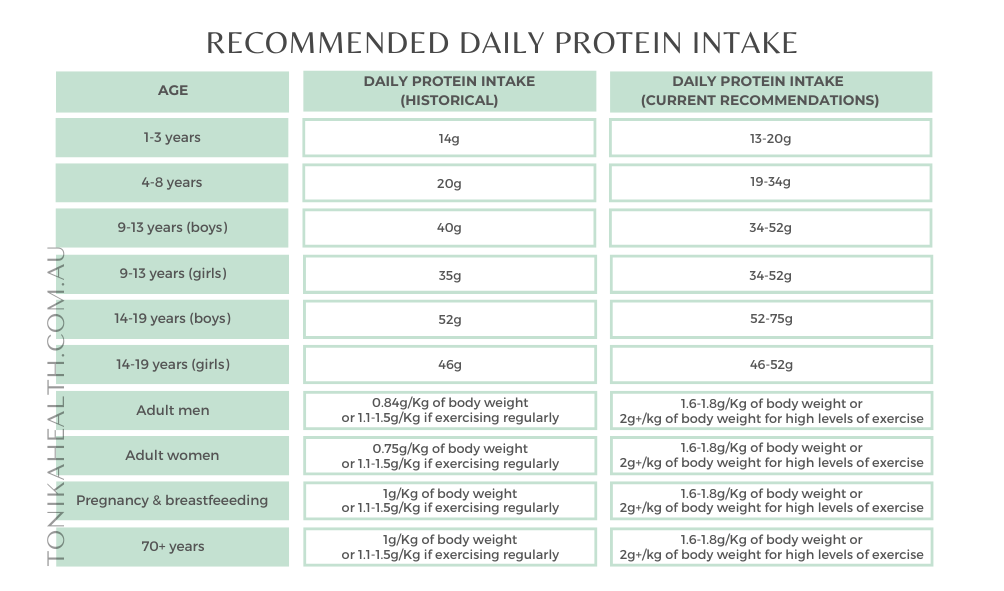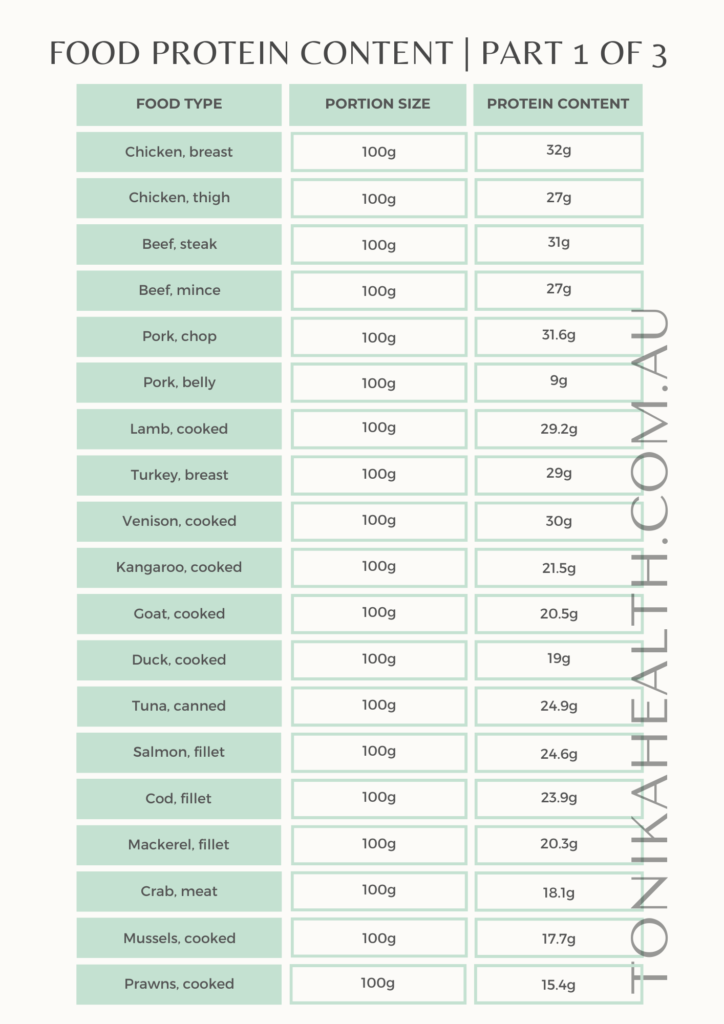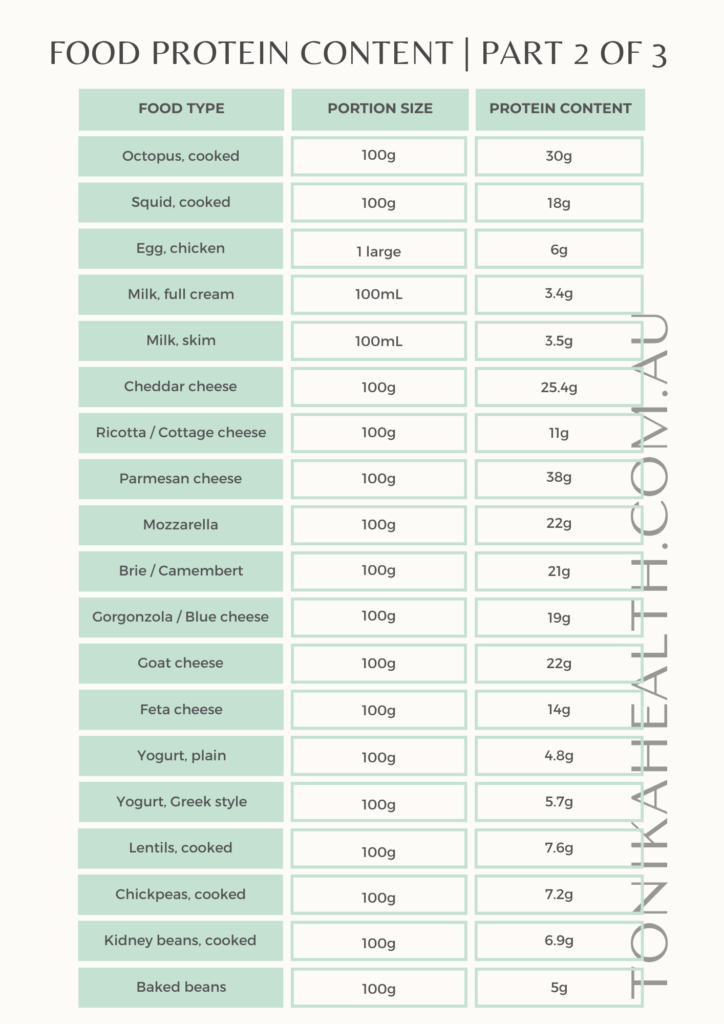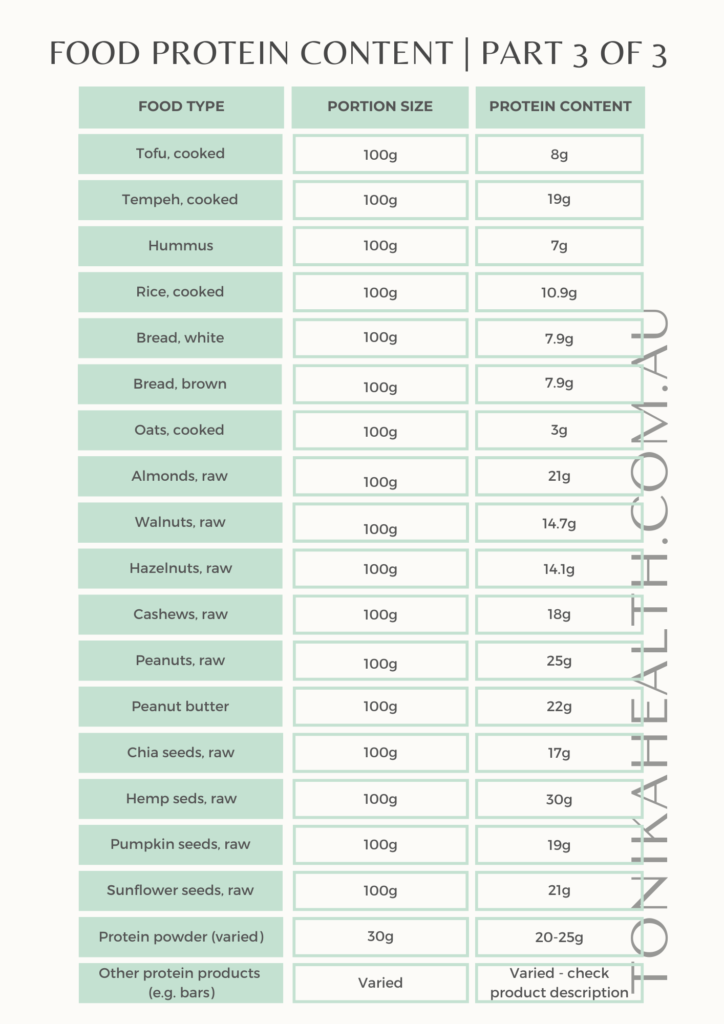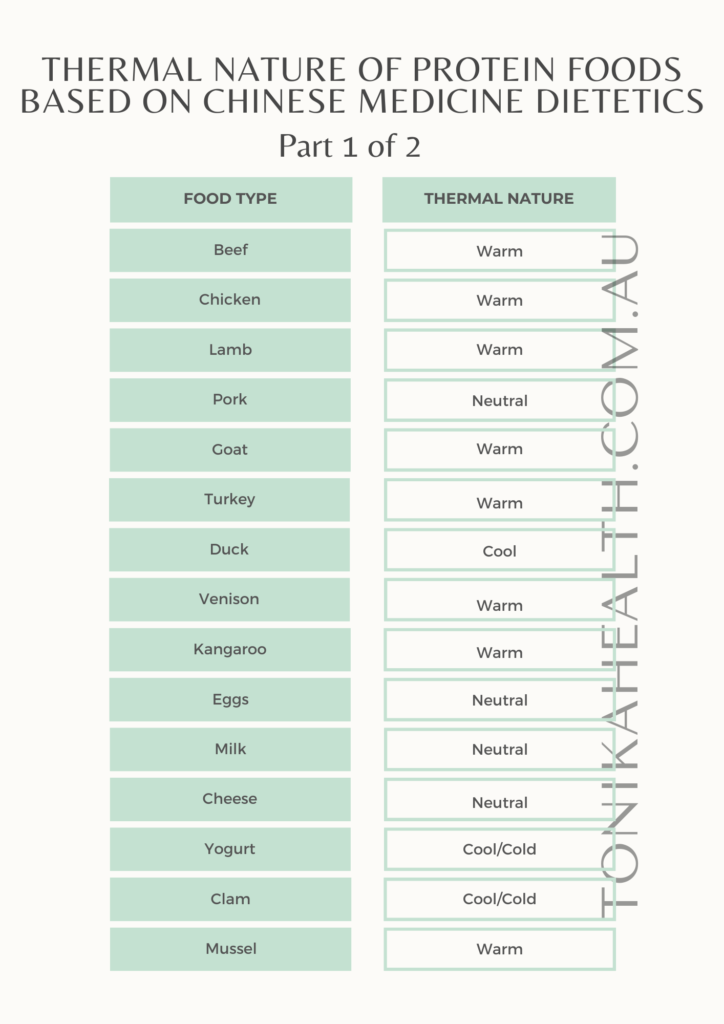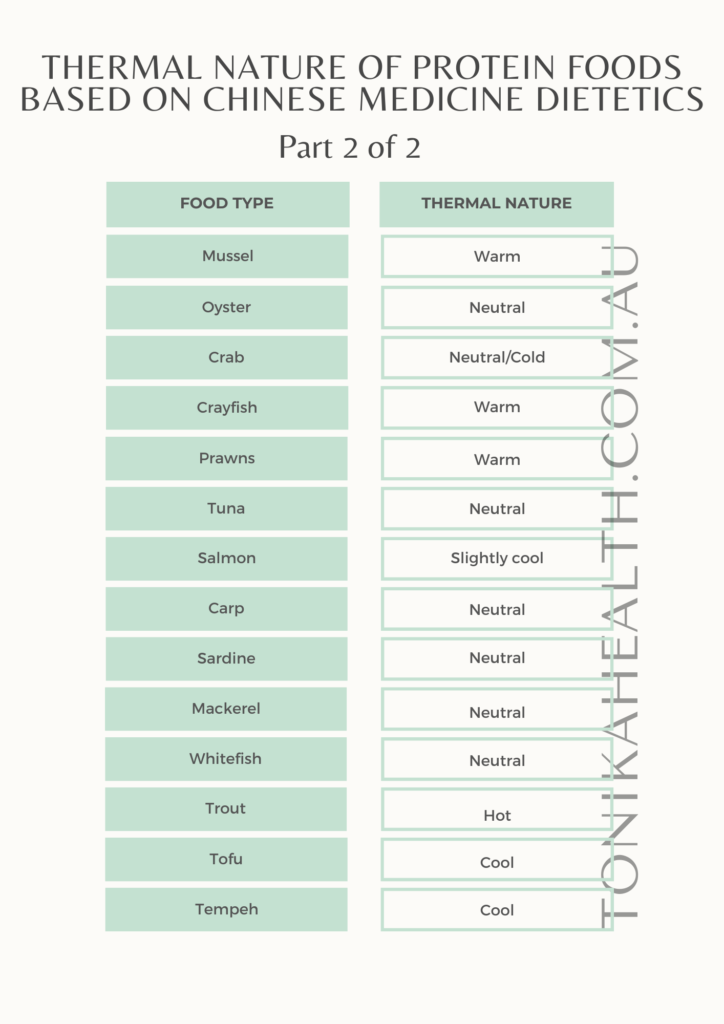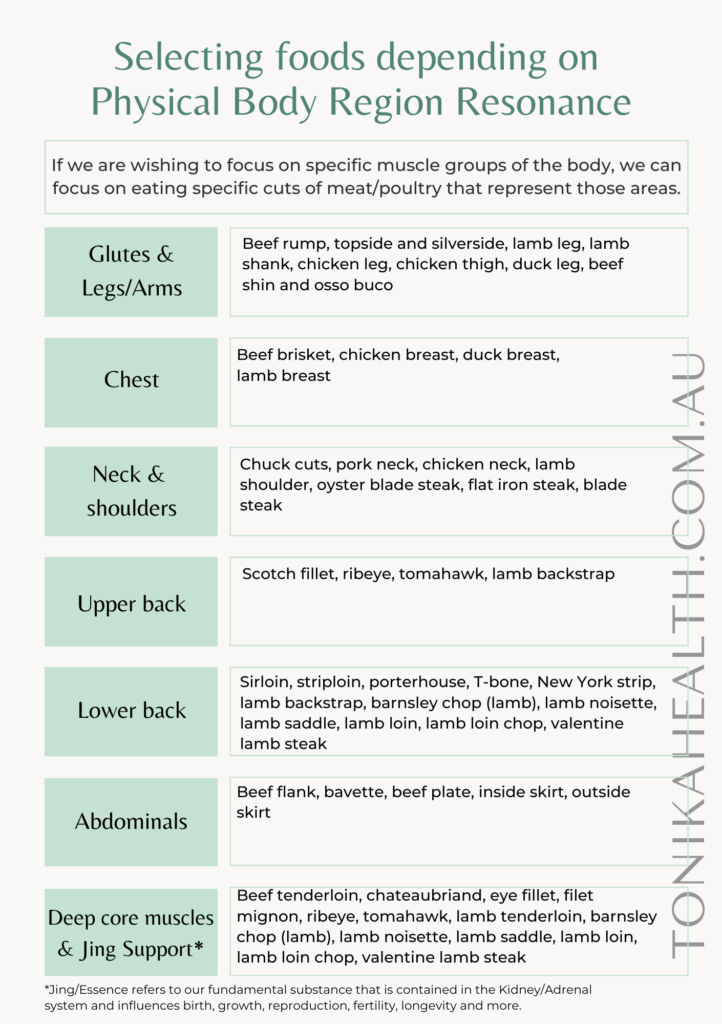12 Jul Protein 101 – All About Protein For Optimal Healing and Health

12 Jul 2024
In the intricate tapestry of human physiology, protein stands as one of the fundamental building blocks, playing a pivotal role in countless physiological processes. Protein has a reputation to help build and maintain muscle mass, however it does a lot more than help you size up at the gym!
Beyond its association with muscle development, protein is an indispensable macronutrient that contributes to the overall well-being of the body. In this article we will explore the function of protein, daily intake requirements, varied sources of protein, symptoms of inadequate and excessive intake, as well as understanding protein through the lens of Chinese medicine.
We have included several downloadable charts for you to save on your device for quick access to assist you with applying this information. To save the charts, click on the relevant chart and select save image.
Protein function / requirements
Proteins are not merely dietary elements; they are the architects of many structures and processes within our bodies. Proteins are comprised of different amino acids which are formed into chains, which then create the structures of the body. The specific arrangement of these amino acids determines the unique characteristics and functions of each form of protein. 9 of the 20 amino acids cannot be made in our bodies, so we must source them from food (see list below for dietary sources of protein). These essential amino acids are histidine, isoleucine, leucine, lysine, methionine, phenylalanine, threonine, tryptophan, and valine.
“Proteins are the building blocks of the structure of our physical body.”
Proteins are the building blocks of bodily tissues, providing the essential framework for muscles, organs, skin, bone, connective tissues, hair, nails and more. Enzymes, which are critical catalysts for biochemical reactions, are also predominantly composed of proteins, orchestrating various metabolic processes that keep the body running smoothly. Certain proteins also act as messengers, facilitating communication between cells and regulating crucial functions like hormone production and immune responses. So, you can see that protein plays an indispensable role in your health and healing!
Quantities of protein
Understanding the daily requirements of protein is paramount for maintaining optimal health. Our bodies cannot easily store protein, which means it is important to have an adequate dietary intake of protein each day. The recommended daily intake varies throughout life stages and is also dependant on factors such as sex, weight, and physical activity levels.
New scientific research suggests that the baseline protein requirements needed to maintain healthy muscle mass and overall health are much higher than earlier and commonly cited studies have suggested. Click on this link to view a recent study- (Stokes et al., 2018).
The table below shows the historical recommended dietary intake of protein per day compared with the ranges suggested by current scientific research.
While protein deficiency is relatively uncommon in well-nourished populations, it can manifest with a range of symptoms if it does occur. Fatigue, muscular weakness, brittle hair and nails, and poor concentration may be early indicators of insufficient protein intake. Over time, protein deficiency can lead to more severe consequences, such as compromised immune function, slow wound healing, and a significant reduction in muscle mass. Addressing protein insufficiency early on is key to preventing long-term health complications.
While protein is a crucial nutrient for overall health, consuming excessive amounts can lead to potential health concerns. Some symptoms associated with excessive protein intake include digestive issues, halitosis, dehydration, skin reactions, nutrient absorption issues, bone density issues, weight gain, and kidney damage. (More about Chinese medicine and the Kidneys below)
Please note that the following may decrease protein requirements – gastrointestinal issues (issues with stomach, pancreas, small intestine, large intestine, etc.), kidney function problems, food intolerances (to specific foods or amino acids), and diseases requiring a lower protein intake (such as liver and kidney diseases, phenylketonuria, homocysteinuria, and more).
It’s important to note that the optimal amount of protein can vary among individuals based on factors like age, sex, weight, and physical activity levels. Moderation and a well-balanced diet are crucial for optimal health. We recommend that you find your best balance of protein intake for you somewhere between the historical and current recommendations in our chart above. Before making significant changes to your diet, it’s advisable to consult with a healthcare professional to ensure your nutritional needs are met without compromising your health.
Protein Quantities in Common Foods Chart
Please refer to our charts below that list the protein content in common foods:
Protein calculator
To calculate your daily protein intake, you can use this protein calculator below:
https://tools.myfooddata.com/protein-calculator
Balancing Water intake and Protein Consumption
It’s important to be aware that those with a higher protein intake will need to balance this with increased water intake to assist the kidneys with filtering the waste products that are a by-product of protein metabolism. Once these waste products are filtered by the kidneys, they are excreted via urination. A high protein diet without adequate hydration may lead to urine that is darker in colour and more pungent in smell due to the additional protein metabolites being excreted through the urine. Due to the added need to excrete waste, it’s important to increase hydration.
The optimal amount of daily water consumption is difficult to suggest for each individual due to variations in body mass, level of activity, amount of sweating, and other dietary and health factors. One of the best ways to determine adequate hydration levels is by self-analysis of urinary output. This includes the quantity, frequency, colour and smell of your urine.
Please note that if people are taking certain supplements, the colour of their urine will be affected, so this important fact needs to be taken into consideration during urine analysis.

All urinary self-analysis measures need to be compared with the urinary norms that one has experienced over larger spans of one’s life, as each person has a different urinary output, and it can vary significantly between each person, and can change over time due to various reasons. Colour and smell of urine give an indication of urinary concentration. High urinary concentration signifies that the body has reduced levels of hydration and a higher ratio of waste products in the urine. By increasing urinary output, i.e. urinary quantity and frequency, we maximise our body’s ability to excrete waste products via the urinary pathway. This can be achieved by increasing our water and fluid consumption.
As with all Chinese medicine principles, we are looking to achieve balance. Ideally, urination output shouldn’t be too frequent, nor too scant, the colour should be like light straw and there should be moderate to little or no smell. If at anytime, you are concerned about changes in your urinary frequency, concentration, output or colour, please seek care from your medical professional.
There are certain other factors that will influence fluid intake requirements, and that will affect urinary output, so please bear in mind that the guidelines above are general and if you are aware of any specific health issues that may impact your hydration requirements or urinary output, please take that into consideration when using this method of hydration analysis.
To hydrate yourself, we recommend consuming the best quality of water possible. For example, filtered, pure, alkaline water (or fresh from a pristine alpine stream!). An additional component from a Chinese medicine perspective – it is ideal to consume water hot or at room temperature. Chinese medicine suggests that warm or hot water is more absorbable by the body, and the warmth taken into the body assists with the circulation of Qi and Blood deep inside the core of the body, ultimately benefiting one’s overall health.
Varieties (Qualities) of protein
Protein can be sourced from various forms of food and nutritional supplements. Please note that we advocate for a balanced diet that is primarily from wholefoods and fresh produce. Please see some examples of protein sources below:
Animal sources – red meat, poultry, fish, eggs, and dairy products – all provide complete proteins that contain all the essential amino acids.
Plant sources – legumes, vegetables, fruits, nuts, seeds, tofu/tempeh and whole grains – all provide a diverse amino acid profile.
Nutritional supplements – protein powders (whey, casein, pea, hemp, egg albumen, brown rice protein, BCAA, etc), collagen powders, protein bars – all provide a varied amino acid profile depending on the product. Some protein supplements may have undergone a hydrolysing process, which is done to increase absorption of some amino acids.
We recommend protein supplements that include little to none of the following: fillers, additives, preservatives, sugar or artificial sweeteners. These types of protein supplements are known as ‘clean’ protein supplements by health professionals.
In addition to consuming enough protein daily, it is also crucial to consume proteins from various sources that include a complete amino acid profile. The essential amino acids are crucial for numerous physiological processes in the body, including protein synthesis, neurotransmitter production, immune function, and hormone regulation.
Some of the specific functions of the individual essential amino acids include –
Histidine: involved in the synthesis of histamine, a neurotransmitter involved in immune response, digestion, and sexual function. Histidine also plays a role in maintaining the myelin sheaths, which protect nerve cells.
Foods that are high in histidine: beef, veal, pork, chicken, cod, tuna, soybeans, eggs, milk, parmesan cheese, pumpkin seeds, hemp seeds, and spirulina.
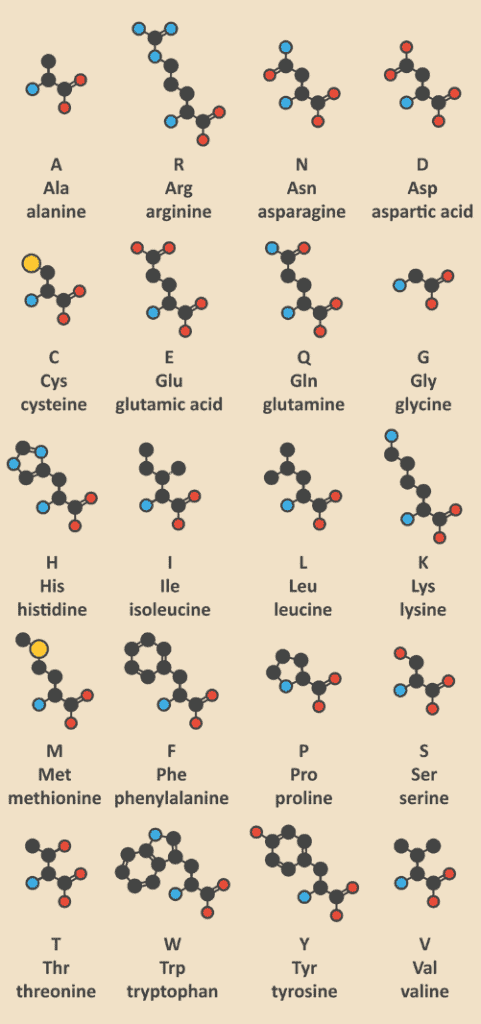
Isoleucine: important for muscle metabolism, haemoglobin production, and regulating blood sugar levels. It is also involved in wound healing and immune function.
Foods that are high in isoleucine: beef, chicken, lamb, salmon, tuna, milk, soy protein, peas, lentils, sunflower seeds, peanuts, chard
Leucine: a key regulator of muscle protein synthesis, making it essential for muscle growth and repair. It also helps regulate blood sugar levels and supports wound healing.
Foods that are high in leucine: chicken, turkey, beef, parmesan cheese, tuna, eggs, lentils, broad beans, sesame seeds, pine nuts, leafy greens
Valine: vital for muscle metabolism, tissue repair, and the maintenance of nitrogen balance in the body. It also serves as an energy source for muscles during exercise.
Foods that are high in valine: beef, lamb, turkey, salmon, eggs, yogurt, seaweed, mushrooms, pistachios, cashews, navy beans, kidney beans, quinoa
**Please note that isoleucine, leucine and valine are three of the most important amino acids for muscle production as they activate certain pathways in the body that assist in muscle growth. A combination of these amino acids is available in BCAA (Branched-Chain Amino Acid) products that are suitable for athletes and bodybuilders or those who consider muscle growth as an important part of their training regime. In your search for a BCAA product, use the same guidelines as above to help you choose a “clean protein” supplement.
Lysine: involved in protein synthesis, collagen formation, and the absorption of calcium. It also plays a role in hormone production, enzyme activity, and immune function.
Foods that are high in lysine: Beef, chicken, lamb, tuna, prawns, eggs, yogurt, parmesan cheese, soybeans, lentils, oats, spirulina, quinoa
Methionine: a precursor for various important molecules, including other amino acids, hormones, and neurotransmitters. It is also involved in the synthesis of cysteine, which is necessary in the production of glutathione, a powerful antioxidant.
Foods that are high in methionine: beef, chicken, pork, lobster, salmon, tuna, eggs, brazil nuts, sesame seeds, seaweed, black beans, soybeans
Phenylalanine: a precursor for the synthesis of tyrosine, which is further used to produce neurotransmitters such as dopamine, epinephrine, and norepinephrine. It also plays a role in the production of melanin, the pigment responsible for skin and hair colour.

Foods that are high in phenylalanine: beef, venison, duck, salmon, mackerel, eggs, milk, yogurt, almonds, pistachios, lentils, tofu
Threonine: involved in protein synthesis and is a component of structural proteins such as collagen and elastin. It also plays a role in the function of the nervous system and the maintenance of proper digestive tract function.
Foods that are high in threonine: chicken, lamb, beef, turkey, salmon, milk, cottage cheese, eggs, sesame seeds, pumpkin seeds, kidney beans, spinach, banana
Tryptophan: a precursor for serotonin, a neurotransmitter that regulates mood, sleep, and appetite. It is also involved in the synthesis of melatonin, a hormone that regulates the sleep-wake cycle.
Foods that are high in tryptophan: beef, chicken, turkey, pork, tuna, snapper, eggs, milk, cheese, peanuts, sesame seeds, seaweed, tofu and soybeans, quinoa, oats
Arginine: In children, arginine becomes essential during periods of rapid growth, such as infancy, childhood, and adolescence, when the body’s demand for protein synthesis, tissue repair, and growth hormone release is high.
During illness or injury, our arginine requirements may increase due to its roles in immune function and wound healing. Ensuring an adequate intake of arginine-rich foods or supplements can help support these restorative physiological functions.
Foods that are high in arginine: turkey, chicken, beef, milk, yogurt, cheese, walnuts, hazelnuts, pine nuts, peanuts, pumpkin seeds, sunflower seeds, soybeans, oats, corn, buckwheat
Eggs are a high-quality complete source of protein as they are one of the few foods that contain the 9 essential amino acids plus the semi-essential amino acid, Arginine. Consuming eggs daily (providing that they are well tolerated by your body, and are not excluded by dietary restriction), will allow you to reach your amino acid requirements easily.
Starting the day with a protein rich breakfast provides your body with the essential amino acids to support your physiological requirements throughout the day, especially after an overnight fast. Consuming protein-rich foods in the morning can help stabilize blood sugar levels, support hormonal health, maintain lean muscle, provide sustained energy throughout the day, help control appetite and curb unwanted cravings. To access these health benefits, it is important to consume at least 25-30g of protein for breakfast, and ensure you have a varied amino acid profile in your daily diet.
For specific essential amino acid requirements, there isn’t a single set value for each amino acid, but rather a recommendation for total protein intake. However, consuming a variety of protein sources throughout the day from both animal and plant-based foods can help ensure adequate intake of all of the essential amino acids. Vegetarians/vegans can achieve a complete protein profile by combining grains and legumes in a ratio of approximately two parts grain to one part legume. If the total daily protein quantity appears challenging to meet for vegans/vegetarians, for example lysine and tryptophan which are poorly represented in plant foods, supplementation with various protein powders is recommended.
Chinese medicine understanding of protein
In Chinese medicine, protein rich foods are generally nourishing and help build the vital substances in the body – Qi, Blood, Yin, Jing and Body Fluids (Jin Ye). All of these substances as understood by Chinese medicine have an effect of generating and replenishing physical structures and materials of the body. Chinese medicine theory has developed over thousands of years but during ancient times Chinese medicine never referred to proteins and individual amino acids as it is understood by modern nutritional science. However, modern herbal medicine analysis shows that many of the herbs and foods in the Qi, Blood, Jing, Yin and Body Fluids tonification categories seem to be rich in various proteins and amino acids, as well as other nutritive substances. A nutritive substance is something that is regenerative to the body and helps with healing damaged tissues and structures.
Interestingly, Chinese medicine also has several unique diagnostic methods such as tongue diagnosis, pulse diagnosis, as well as abdominal and channel palpation diagnostics and more, to determine if a patient is lacking in Qi, Blood, Yin, Jing and/or Body Fluids. In modern clinical practice, it is commonly observed that those with the deficiencies listed above also commonly have challenges with protein consumption, although it is not exclusively the case. Using the principle of ‘let food be thy medicine and medicine be thy food,’ we usually suggest to our patients to supplement their diet with protein rich foods and/or protein supplements prior to prescribing other Chinese herbal medicines, unless they are specifically indicated for that patient. Essentially, we are giving the body nutritive substances when it requires it. At the same time we have diagnostic methods to know when people are “over-nourished” and the strategy for that is very different where we try to clear and drain excesses from the body. This is like being an over-watered/fertilised or under-watered/fertilised plant, we just require the right amount of nutritive substances to create the harmonious environment needed to flourish.
According to Chinese medicine, different foods also have unique energetic properties and thermal natures. This indicates the capacity of the food to generate different responses and thermal fluctuations within the body’s energies, tissues and internal organs. The energetics and thermal nature of food is not specifically associated with the temperature of the food at the time of consumption (although this will affect the way the food influences the body), but the ultimate effects on the body after digestion and assimilation. For example, peppermint tea is hot in temperature upon consumption, but cool in thermal nature in its effects on the body. Another example- cold alcoholic beverages with ice cubes are cold in temperature but still hot in thermal nature due to the heating thermal nature of the alcohol. However, as described above with drinking of hot water, Chinese medicine suggests that foods that are warm or hot in temperature are more absorbable by the body, and the warmth taken into the body assists with the circulation of Qi and Blood deep inside the core of the body, ultimately benefiting one’s overall health. Food and drinks that are cold in temperature can be seen to have the opposite effect, by causing contraction inside the body, therefore impeding the flow of Qi and Blood, however, may be helpful when trying to cool excess heat in cases of hot weather or vigorous exercise. So what we suggest is taking into consideration the temperature of the food that we consume, as well as the thermal nature of the food and its effects on our system.

Most people do best by consuming a predominantly warming diet (in thermal nature and temperature). Cold and hot foods may have important roles to fulfil within the body, but should be used in moderation and in specific cases (and harmonised with a diet that is more balanced in thermal nature).
Like the nature of food, our bodies can be hot, warm, cool or cold. Or a mixture! This may come across as warm or hot people being prone to health issues featuring inflammation or inflammatory conditions, or finding their body temperature tends to overheating, as opposed to those with cold or cool constitutions having challenges with temperature regulation, frequently feeling cool or cold, and having health conditions that are related to symptoms that feature reduced circulation of Qi, Blood and Body Fluids. People with a hot constitution should aim for balance by eating cooling foods combined with warm foods, but avoid hot foods. It is important to note that eating too many cooling foods without balancing them with warm foods or temperatures can be harsh on the digestive system, so a good balance is necessary. People with a cold constitution should aim for harmony by eating warm foods, both in nature and temperature, and moderating cold foods.
As this article is primarily focused on protein, and we don’t have the scope to provide a large list of other food groups, we have put charts together below with the different thermal natures of a variety of protein foods, so that you can use these charts to guide you in selecting protein foods based on their thermal nature.
Please note that the following may increase protein requirements – pregnancy, postpartum, follicular phase of the menstrual cycle, moderate to high levels of exercise, bodily fatigue and generalised soreness, healing from injury or surgery or chronic illness, elderly (not too much or too little), poor immunity and wound healing, hair/skin/nail health, and muscular tissue decline.
As the Kidneys play a significant role in processing proteins in the bloodstream, if someone is diagnosed with a constitutional Kidney deficiency in Chinese medicine, they should opt for moderation with their protein intake until they have corrected the deficiency as higher protein intake may be more of a burden to process for those with a Kidney weakness. Similarly, those with constitutional imbalances in the Stomach, Pancreas, Small Intestine and Large Intestine should also moderate their protein intake until these systems have been brought into harmony with Acupuncture and Chinese medicine treatment, as these systems also play a vital role in efficient protein assimilation.
Depending on your constitution and state of health, each person may benefit from a different variety of proteins and nutritive foods based on the innate properties of these foods/supplements. If you’d like to know more about your constitutional requirements, ask our acupuncturists, Peter or Veronika, during your next acupuncture session for individualised Chinese medicine dietetic advice.
Thermal Nature of Protein Foods based on Chinese Medicine Dietetics
Protein and the health of the acupuncture channel system
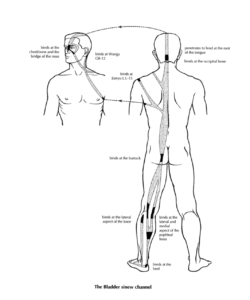 Protein and other forms of nutritive substances play an important role in maintaining the integrity of our acupuncture channel/meridian system. The acupuncture channel system interpenetrates the major body structures such as skin, muscles, bone, fascia, nervous tissue, organs, tendons, adipose tissue, and more. As well as fulfilling all of their other functions, these tissues assist with the flow of Qi, and the integrity of those tissues is vital to the correct flow of Qi and Blood and information signals throughout the body. Therefore, it is very important to provide the raw materials and nutritive substances needed to maintain the health of the body’s tissues through our diet.
Protein and other forms of nutritive substances play an important role in maintaining the integrity of our acupuncture channel/meridian system. The acupuncture channel system interpenetrates the major body structures such as skin, muscles, bone, fascia, nervous tissue, organs, tendons, adipose tissue, and more. As well as fulfilling all of their other functions, these tissues assist with the flow of Qi, and the integrity of those tissues is vital to the correct flow of Qi and Blood and information signals throughout the body. Therefore, it is very important to provide the raw materials and nutritive substances needed to maintain the health of the body’s tissues through our diet.
According to integrative doctor (and author of Healing is Voltage: Acupuncture muscle batteries) Dr Jerry Tenant, the body and its tissues hold a charge (or voltage), and this charge is influenced by the integrity of the body’s tissues and influences the health and operation of the various cells, structures and organs of the body so that it can function harmoniously. We therefore have to see our body and its tissues almost like a series of interconnected batteries that hold a charge, which can be full or empty. It’s desirable to have a higher level of charge that can be distributed evenly and completely throughout the whole structure to assist in the optimal functioning of the body. Therefore, a diet containing adequate protein and other nutritive substances are essential to maintaining robust body tissues that are in excellent functioning condition to carry a healing voltage and distribute Qi and Blood throughout the body harmoniously.
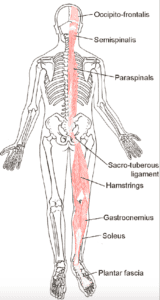
While protein is an incredibly vital part of our health, it is also important to remember that the macronutrients (fat, protein and carbohydrates) work synergistically in the body. Healthy fats and proteins (combined with other vitamins and minerals) supply the body with the raw materials to make healthy new cells and tissues, and carbohydrates provide the fuel source for the cells and tissues to carry out their physiological functions. Therefore, a diet with a healthy balance of the three major macronutrients from a variety of whole-foods is essential for those wishing to cultivate robust health. Furthermore, our digestive and assimilative capacities have to be functioning optimally to be able to absorb proteins, healthy fats, vitamins, minerals and other nutritive substances to create healthy cells and body tissues.
Some examples of digestive processes that need to be functioning optimally for assimilation of nutrients to deliver effectively to the body’s tissues:
- maceration and salivary enzyme secretion (mouth)
- hydrochloric acid (HCl) secretion (stomach)
- bile secretion (liver and gall bladder)
- digestive enzyme secretion (pancreas)
- intestinal permeability / intestinal villi integrity, blood circulation of intestinal mesentery and microbiome integrity (small intestine)
Beyond the Physical
Unless we included some “woo” in the mix for this article, it wouldn’t be right for us at tonika health!
This section of the article simply gives some additional viewpoints to consider during our selection of foods as building blocks of the physical body, so that we can also include aspects of the non-physical parts of us when making our choices.
Let’s first look at this modified diagram, which we have put together based on an original diagram as presented by Dr Samuel Sagan of the Clairvision school in one of his texts, which has been slightly modified by us based on the understanding of various Esoteric schools of thought.
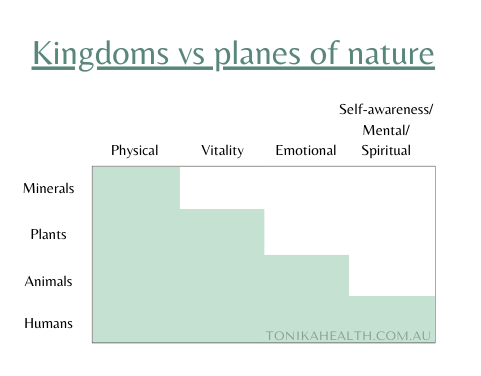 This chart is based on correspondences between the Mineral, Vegetable (plant), Animal and Human kingdoms, and the Planes of Nature, which represent subtle levels of our being including the physical body, but also beyond the physical. Simply put, these planes are the Physical (our Physical body), Etheric/Vitality (Energetic), Emotional/Astral (Emotions), Mental (Thoughts), and 3 various/diverse Spiritual planes (we won’t cover here as they don’t pertain too much to this article). Our being in fact traverses all of these planes, but it is of course the denser aspects of Physical, Energetic, Emotional and Mental that we are more aware of in our day to day lives, and what we primarily focus on with health (with some also focusing on the important aspects of the Spiritual too).
This chart is based on correspondences between the Mineral, Vegetable (plant), Animal and Human kingdoms, and the Planes of Nature, which represent subtle levels of our being including the physical body, but also beyond the physical. Simply put, these planes are the Physical (our Physical body), Etheric/Vitality (Energetic), Emotional/Astral (Emotions), Mental (Thoughts), and 3 various/diverse Spiritual planes (we won’t cover here as they don’t pertain too much to this article). Our being in fact traverses all of these planes, but it is of course the denser aspects of Physical, Energetic, Emotional and Mental that we are more aware of in our day to day lives, and what we primarily focus on with health (with some also focusing on the important aspects of the Spiritual too).
What we see in the diagram which pertains to this article is the resonance of the Mineral, Vegetable (plant) and Animal kingdoms with specific aspects of the Planes of Nature.This is important for humans, as the foods and supplements that we take into our bodies are from the mineral, vegetable and animal kingdoms, and apart from at a basic cellular level, those particular foods and substances as a result, have a specific influence on those dense and subtle aspects of our being, depending on the parts of our being that they primarily resonate with. We need to feed the various aspects of our non-physical, as well as physical, and while there are many other ways to do that with energetic and mental/emotional balancing practices (e.g. Qi Gong, Meditation, therapies, and more), as well as spiritual practices, foods and nutritive substances can also influence these parts of us.
As can be seen in the diagram, the Mineral kingdom substances only have a strong resonance with the Physical body/plane, whilst the Vegetable (plant) kingdom substances have a stronger resonance with the Physical body/plane and Vitality plane, and the Animal kingdom substances have a resonance with the Physical body/plane, Vitality and Emotional planes. Resonance with specific planes more than others means that when we take those substances into ourselves (through digestion and assimilation), those substances apart from their effect on our physical body on a biological level, will also have an effect of influencing our subtle bodies.
As humans, we have a resonance on all of these planes and more, and therefore need to feed each level of our existence equally. It was commonly observed in ancient cultures and tribes that they selected certain animals and plants for their specific properties that they bestow upon oneself, that were more on the energetic and emotional levels, such as increased vitality, improved levels of courage and willpower and more. We can apply similar principles!
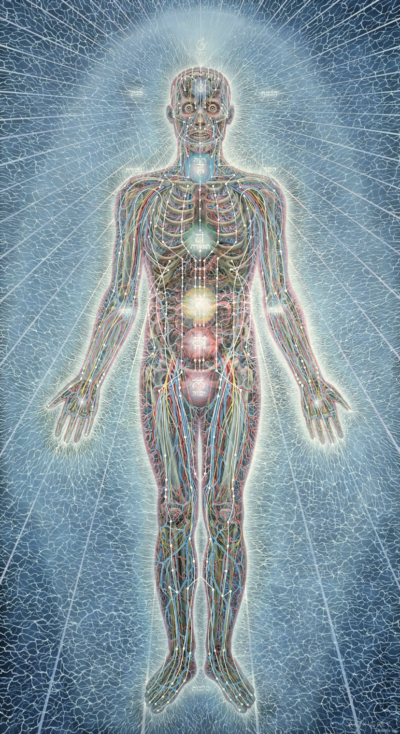 If your needs are more in the arena of the Physical body, then primarily take into account the information throughout the rest of this article that focuses on the scientific principles. If your needs are more on balancing the energetic or emotional levels, please take into consideration some of the ideas in this section of the article regarding which foods to explore to influence those aspects of our being. Take into account that we are looking to create a balance at all times, and that balance may be different for each person.
If your needs are more in the arena of the Physical body, then primarily take into account the information throughout the rest of this article that focuses on the scientific principles. If your needs are more on balancing the energetic or emotional levels, please take into consideration some of the ideas in this section of the article regarding which foods to explore to influence those aspects of our being. Take into account that we are looking to create a balance at all times, and that balance may be different for each person.
We also have to consider those wishing to focus on the integrity of the structures of the physical body may also have a stronger focus on a wide variety of omnivorous sources as they are looking to create a density and strength/resilience of the structures of the physical body for its physical uses in the physical world, whilst those wishing to have a lighter and more energetic and non-physical focus (meditators and energy workers) may focus on a lighter plant based diet, as their focus is more on the energetic and non-physical.
It should be noted that also in Chinese herbal medicine, there are several groupings of medicinal substances (materia medica) that are from the mineral, vegetable (plant), and animal kingdom. Chinese herbalism in fact finds that the substances not only have effects on the body due to the inherent herbal constituents, but also work upon the body in different ways based on what part of the plant or animal they are from, or what type of mineral substance it is. Depending on which imbalance or deficiency someone has, specific herbal medicines may be used to influence several aspects of the physical, energetic, emotional and mental aspects of the person to assist in bringing balance to health (other systems such as Western Herbalism, Anthroposophical Medicine and Homeopathy all have their own theories that apply these similar principles differently). There are even specific herbal medicinals such as Ling Zhi/Reishi/Ganoderma mushroom, Ren Shen/Ginseng, and many more, which despite having very unique biological healing agents contained within them, in fact also act on the Emotional, Mental and Spiritual levels of the person, due to their unique properties. Adding these types of medicinal herbs into your diet, if applicable, can be particularly beneficial for the non-physical aspect of ourselves, as well as benefiting the denser physical levels of ourselves.
(An important note here regarding animal and certain plant related products and traditional medicines, is that historically certain animal and plant products have been hunted, harvested, collected or used where unethical practices or exploitation of endangered species may occur. In modern times, laws and regulations have been put in place so that animal and plant sourcing of medicinal substances is done ethically, and endangered species are protected. CITES is a multilateral treaty to protect endangered plants and animals from the threats of international trade. It was drafted as a result of a resolution adopted in 1963 at a meeting of members of the International Union for Conservation of Nature. Australia became a party to CITES in 1976, and therefore champions the principles of CITES in ensuring the ethical usage and supply of medicinal plants and animal products in Australia and the restriction of banned products. We uphold and support these principles at tonika health.)
Selecting Foods depending on Physical Body Region Resonance
Taking things a little further, but on the Physical body/plane, applying the same principle as above – selecting specific parts of the medicinal substance, we can in fact apply this principle when we are wanting to influence certain structures or areas in our body due to cellular similarities. This follows a well known principle known as the “doctrine of signatures.” This is an ancient principle that was used in many traditional medicine practices to assign specific medicinal substances to facilitate the healing of certain parts of the body.
If we are wishing to have an effect on our fertility, we can consume eggs, plant seeds and nuts, caviar, roe or animal testes, due to their resonance with the gonads (Ovaries/Testes).
If we are wishing to influence the health of our joints, tendons and connective tissues, eating collagen products, beef tendon, trotters, chicken feet, bone broth and more.
If we are wishing to influence the health of specific organs in our body, we can select animal organs such as liver, kidney, heart, brain, tripe, spleen, tongue, sweetbreads (pancreas, thymus).
If we are wishing to focus on specific muscle groups of the body, we can focus on eating specific cuts of meat that represent those areas.
Examples of foods to influence different muscle groups –
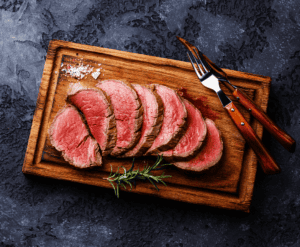
Glutes and Legs/Arms – Beef rump, topside and silverside, lamb leg, lamb shank chicken leg, chicken thigh, duck leg, beef shin and osso buco
Chest – Beef brisket, chicken breast, duck breast, lamb breast
Neck/Shoulders – Chuck cuts, pork neck, chicken neck, lamb shoulder, oyster blade steak, flat iron steak, blade steak
Upper Back – Scotch fillet, ribeye, tomahawk, lamb backstrap, rack of lamb
Lower Back – Sirloin, striploin, porterhouse, T-bone, New York strip, lamb backstrap, barnsley chop (lamb), lamb noisette, lamb saddle, lamb loin, lamb loin chop, valentine lamb steak
Abdominals – Beef flank, bavette, Beef plate, Inside skirt, outside skirt
Deep Core Muscles – Beef tenderloin, chateaubriand, eye fillet, filet mignon, ribeye, tomahawk, lamb tenderloin, barnsley chop (lamb), lamb noisette, lamb saddle, lamb loin, lamb loin chop, valentine lamb steak
We will also note that the deep core muscles next to the spine have a resonance with the Chong Mai Extraordinary acupuncture Channel, which has a strong connection to the Chinese Medicine concept of Jing/Essence, which is deeply connected to the most fundamental aspects of our life force, therefore, we particularly recommend the cuts of meat that have a resonance with the Chong Mai to assist in nourishing our bodies on a deep and fundamental level.
Please take this additional information into consideration when making your food choices, and of course, if you have any restrictions on eating specific food groups or varieties due to specific beliefs, health conditions, allergies or intolerances, then find the pathway that is right for you.
What the thrust of this section of the article is explaining, is that having diversity of sources of foods, nutritive substances and supplements may lead to an equal balance of the different mineral, vegetable and animal kingdoms in our diet, so that we may nourish ourselves on several planes of our existence, and furthermore, we have covered how to choose foods when we are looking to influence specific zones/areas of the physical body. These are factors rarely spoken about when selecting dietary choices that are right for us. Maybe this can provide an additional perspective when selecting different and diverse protein sources for your diet?
It’s now time to apply this information!
As can be observed by all that is contained in this article, understanding protein/amino acids and their role in our diet is a deep and multifaceted subject that is extremely valuable to assist us on our healthcare journey. We suggest that you start putting this information into action!
If you feel like you need help to assist you with your specific health needs based on any of the information provided above, please feel free contact Peter or Veronika for further advice, or chat with them at your next acupuncture appointment.
Protein Case Studies
We have provided a collection of case studies below, so that you may observe real life examples of the above information applied to diverse real world situations, so that you may find what you learned in this article easier to apply for yourself depending on your individual needs.
Peter’s case study based on several similar patients:
Based on clinical experience, this case example gives a snapshot of several similar cases in a demographic that this article is very important for. Although this is not a single case, it is a combination of several similar cases that are commonly seen in the clinic, observed in women between the ages of 28-50 years, however, can be found in all demographics:
Female, health conscious / making conscious dietary choices (in some cases reduced meat intake, pescatarian, vegetarian or vegan), regular or frequent moderate to intense exercise (daily or 4-5 times weekly), varying weight ranges from regular to thin.
These clients are generally seeking support for general health, moderating stress, improving sleep, regulating menstruation, or assisting fertility.
However, these clients usually seem to have a predisposition to lower energy levels and unexplained muscular fatigue/pain or slower recovery after exercise.
The tongue can be pale or slightly pale (a Chinese medicine diagnostic), and blood work such as iron studies, B12 and Vit D can be low normal or deficient.
Commonly, when we request these clients to do a 1 week “protein study” which involves taking down one’s total daily protein intake over 7 days, we note that the figures seem to fall moderately or significantly below the protein intake requirements, be it the updated figures or original figures suggested in our article above.
When we suggest targeted protein intake goals specific to individuals and their dietary preferences (for example increased protein intake or supplementation) based on their body weight, and these guidelines are followed over several months, in some cases combined with herbs and supplements, we notice a significant improvement in general wellbeing, energy levels, musculoskeletal health (resolution of pain/fatigue) and improved exercise recovery.
It’s for this reason that we suggest if you fall in this demographic, we suggest that you do a self-guided 1-week protein study, and if you notice that you are falling below the recommendations, then get in touch with us at tonika health, so we can guide you in the right direction based on your individual requirements, so that we may assist you with advancing your health.
Veronika’s historical case study:
Profile: 20-year-old female, 162 cm, 53 kg, moderate exercise
Several years ago, I followed a whole-foods plant-based diet for four years. At the onset of my naturopathic medicine studies prior to commencing acupuncture/Chinese medicine studies, I was diligent about meeting my daily micronutrient needs. I consumed a variety of fruits, vegetables, legumes, grains, nuts, seeds, and herbs. I used an app to track my daily micronutrient intake, and filled any dietary gaps with supplements (e.g. B12). I was dedicated!
However, my focus on micronutrients led me to neglect my macronutrient ratios, specifically protein intake. In retrospect, I consumed only about 50 grams of protein per day.
Newer research suggests my ideal protein intake at that time would have been closer to 85 grams of protein daily.
Blood tests showed all markers were within normal ranges, so I was quite pleased about that. While meeting my vitamin and mineral targets contributed to some positive health benefits, I also experienced several issues. I felt hungry by 10AM despite eating breakfast at 7AM, I maintained a decent body weight but struggled with muscle tone, and had lustreless, dry skin and hair, and was also regularly fatigued daily around 2-3PM.
I recommenced eating animal products when I started to have cravings for fish, potentially for the essential fatty acids and protein content. Over time, I noticed my satiety after eating increased, and my energy was more sustained throughout the day. An interesting thing that I experienced was that I had increased psycho-emotional resilience during challenging times, and I felt stronger in my body and mind overall. Including animal products in my diet made it easier for me personally to reach my recommended protein intake per day, although I still have to be mindful about eating enough protein on days that I am busy or unprepared with food/meals.
Peter’s recent case study – A protein Odyssey:
Profile: 42-year-old male, 185cm, 95kg, sensitive constitution, frequent moderate-high intensity exercise.
After returning to regular strength training (after several years of not regularly training) with 5 x 1.5-2hr strength training workouts per week, archery 1 afternoon per week and walking several times per week with the occasional martial art session in between, my protein requirements increased with my additional needs for recovery and goals for lean muscle gain.
At a current 95 kg body weight (9 months after commencing the program-95 kg -Starting weight was originally 103kg. The change in weight and increase in muscle mass though body mass scanning indicates a gain of lean muscle mass as well as a reduction in body fat), my protein requirements increased to about 200g of protein daily from varied omnivorous sources, and supplementation. In retrospect, additional water intake could have been a stronger focus throughout this whole period. I maintained this original regime for about 4 months+, with occasionally increasing protein intake slightly more on days after more strenuous workouts. Around 5 months into this process, during the summertime, I then started to notice some bodily reactions such as skin rashes, red discolouration, and inflammation around the Kidney acupuncture points on the internal ankle and sometimes on the internal calf (Kidney Channel- in acupuncture diagnostics, changes on specific acupuncture channels signal a change in the health of the organ and channel), and some varied skin irritations forming on the Large and Small intestine channel regions on the arms, in the popliteal (knee) creases and cubital (elbow) creases, and on the torso. Urination was more concentrated and slightly more pungent in smell than had been observed in prior years. There was occasionally an increase in dark circle appearance under the eyes (a Kidney related Chinese medicine facial diagnostic sign). Post exercise, inflammation was present, and occasionally showed redness (histamine reaction signs) around areas of primary muscle activity in specific workouts and would exhibit heat in the tissues in those areas for 1+ days post exercise.
Due to the presence of rashes on the Large Intestine and Small Intestine regions specifically, I performed a gut cleanse with antimicrobials for several weeks, followed with gut healing powders (including glutamine) and high-quality probiotics to see if this would be a potential factor in remedying these symptoms. A beneficial effect on G.I.T health was noted, and a sudden reduction in waist circumference was a positive side effect also, but no alteration in other symptoms were observed. A clue that protein consumption was potentially an issue were some increased body heat increase symptoms that revealed themselves post protein powder consumption.
After these reactions went from moderate to more pronounced, I decreased total protein levels, by primarily withdrawing the 2 forms of high-quality protein supplementation, which were Hydrolyzed Collagen Peptides and Whey Protein Isolate, and maintained my food sources of protein, but a reduced amount in total. I also increased water intake. Over 3-4 weeks, a gradual and complete resolution in the rashes, discolouration, and inflammation around a diagnostically important Kidney acupuncture point around the internal ankle, and a reduction in dark circles under the eyes occurred, as well as a gradual resolution in rashes on the trunk of the body. The reduction in protein intake also led to considerably longer recovery times post exercise.
The rashes on the arms and legs (popliteal/knee crease, cubital/elbow crease, Large Intestine Channel, Small intestine Channel) remained, as well as the histamine and heat/inflammatory reactions post exercise. Occasional reactions would occur with dairy (skin), dust mites and mould (respiratory and skin), and therefore strategies were followed to reduce exposure to these substances. Muscle response testing identified intolerances to Histamines, Dairy, Dust Mites, Amines, Mould, and more, and intolerance clearance strategies with PAT (positive association technique) were undertaken to reduce negative response to these substances (including an excellent reduction in histamine and post exercise heat and inflammation reactions), which have yielded positive effects.
Avoidance of Whey Protein (dairy- and other dairy products), and Collagen Protein (can aggravate those with histamine intolerances) saw positive results and clearance in the previous reactions noted, whilst primarily focusing on deriving protein from meat/poultry/fish-based protein sources to continue the goals of recovery from exercise as well, whilst maintaining a level of protein intake between 160-200 grams daily. This combined with an increased daily fluid intake has seen a better overall balance.
Points to take from this case study:
- In general, at higher protein consumption levels, a higher fluid intake has shown it is essential in keeping the urine concentration at a place of balance, and therefore not overloading the kidneys, and body in general with substances that require excretion to maintain balance.The kidneys know what they have to excrete to maintain balance, but if the hydration levels in the body are not high enough due to insufficient fluid intake, they will not be able to adequately excrete the necessary waste through the urine that is required to maintain the balance in the body’s bloodstream.
- Being aware of substances that may lead to intolerance reactions is important. Originally, my tolerance to dairy, and to collagen Powder were ok, but not great to larger amounts of dairy. As I had taken them regularly over a larger span of time, whilst simultaneously taxing my body with a larger intake of protein, my body responded by developing an intolerance or more significant intolerance to them, hence after several months, reactions started to occur, which were relieved by reducing the burden on the body by ceasing to take these substances. Other less (personally) controversial sources of protein were taken, and no negative reactions occurred.
- Diverse protein selection is important but finding the suitable protein source and amount for you is important. Always test different sources for the body’s tolerance to them, and if all is favourable, then continue, and experiment with dosage depending on your requirements. If reactions or alterations in health occur, test reducing or modifying in the case that the body has built up an intolerance to a substance and do these under the advice of your health care practitioner as necessary, so you may differentiate if your symptoms are related to this or something separate.
- Burdening the body with certain challenges that the body finds difficult to deal with can lead to a certain type of unravelling of health, leading to predisposing factors for that person to come to the forefront. When the body’s systems are then given respite by regulating or reducing the irritating factor, it can guide the body back into the direction of balance.
Conclusions on Protein intake
These case studies demonstrate to us the many and varied individual cases that can occur in different patients and demographics, and how a diverse and individual approach is suited for each individual. There is no one approach for all, so it’s important to find your correct path under the guidance of a health professional and being able to modify your approach if there are changes along the way according to how your body is responding is equally important.
If you are requiring assistance in finding your balance for your protein intake, please let us know at your next appointment, or book in specifically with a goal to work on this during your session, so we can help you find your place of balance.
We hope that this article has been helpful to you and helps guide you in your journey to health.
If you have any questions or queries, we encourage you to get in touch via email at: info@tonikahealth.com.au
If you would like to make a booking with us, please book here.
Article co-authored by our Acupuncture and Chinese medicine practitioners:
Peter Scarselletti | BAppSc (TCM) & Veronika Peovska | BHSc (Acupuncture)





